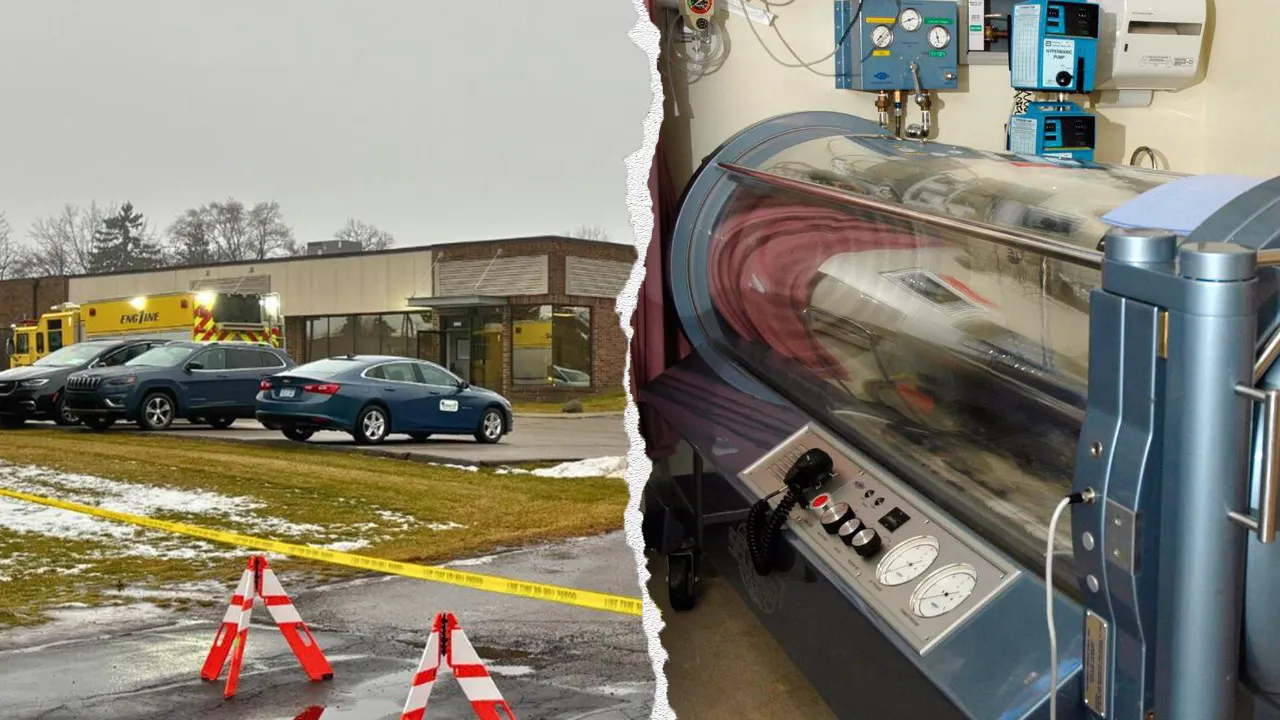Tragic Incident: 5-Year-Old Boy Dies in Hyperbaric Oxygen Chamber Explosion
A devastating accident has claimed the life of a five-year-old boy in Michigan following an explosion in a hyperbaric oxygen therapy chamber. This tragic incident has not only shocked the local community but has also raised significant concerns regarding the safety protocols in medical facilities that utilize hyperbaric oxygen therapy. As investigations unfold, many are left wondering how such a catastrophic event could occur in a setting designed to promote healing and recovery.
Understanding Hyperbaric Oxygen Therapy
Hyperbaric oxygen therapy (HBOT) is a medical treatment that involves breathing pure oxygen in a pressurized room or chamber. This therapy has been effectively used to treat various medical conditions, including decompression sickness, carbon monoxide poisoning, and chronic non-healing wounds. During the therapy, the increased pressure allows oxygen to dissolve more readily into the body’s fluids, enhancing the healing process.
While generally safe when performed under strict protocols, hyperbaric oxygen therapy does carry certain risks, particularly related to the pressurized environment. These risks can include barotrauma, oxygen toxicity, and, as tragically demonstrated in this incident, the potential for fire and explosions.
The Circumstances of the Incident
Details surrounding the explosion that led to the boy’s death are still emerging. Preliminary reports indicate that the child was undergoing treatment for a medical condition that required hyperbaric oxygen therapy. Witnesses described a sudden explosion accompanied by flames, causing panic among staff and patients present at the facility.
The boy suffered critical injuries from the incident and was quickly rushed to a nearby hospital, but despite the best efforts of medical personnel, tragically succumbed to his injuries. The emotional toll of such an event is immeasurable, especially for the family involved and the staff who witnessed the incident.
Investigation and Safety Protocols
In the aftermath of this horrific event, local authorities and health officials have launched an investigation to determine the exact cause of the explosion. This inquiry is crucial not only for the sake of justice for the grieving family but also for the improvement of safety measures in similar facilities. Key areas of focus during the investigation will likely include:
- Equipment Maintenance: Was the hyperbaric chamber properly maintained and inspected before the incident?
- Staff Training: Were the staff adequately trained in handling emergencies and following safety protocols?
- Compliance with Safety Standards: Did the facility adhere to the established safety standards for hyperbaric oxygen therapy?
These questions are critical in understanding how such a tragic incident could occur and in preventing future occurrences. The investigation outcomes may lead to stricter regulations and enhanced safety measures across facilities offering hyperbaric oxygen therapy.
The Importance of Safety in Hyperbaric Therapy
The safety of patients undergoing hyperbaric oxygen therapy cannot be overstated. Facilities must implement rigorous safety protocols, including:
- Regular Equipment Checks: Ensuring that all equipment is functioning correctly and safely.
- Emergency Preparedness Training: Regular training sessions for staff on how to handle emergencies and evacuations.
- Patient Monitoring: Continuous monitoring of patients during therapy to quickly identify any adverse reactions.
Additionally, facilities should have clear communication protocols in place to ensure that patients and their families are informed about potential risks associated with treatment.
The Emotional Impact on the Community
The loss of a child is an unimaginable tragedy, and this incident has resonated deeply within the Michigan community. Families are gripped by fear and uncertainty, questioning the safety of medical treatments that were previously deemed secure. Community support systems, including counseling services, may play a vital role in helping those affected process their grief and anxiety following the incident.
Moreover, it’s essential for medical facilities to engage in open dialogues with the community to restore trust. Transparency regarding the investigation and any changes made to safety protocols will be crucial in reassuring families about the safety of hyperbaric oxygen therapy.
Looking Ahead: Preventing Future Tragedies
As the investigation progresses, it is imperative that the medical community reflects on the implications of this tragic incident. Lessons learned can lead to improved safety measures that could prevent future tragedies. Some measures that could be considered include:
- Enhanced Regulatory Oversight: Strengthening the oversight of hyperbaric facilities to ensure compliance with safety standards.
- Public Awareness Campaigns: Educating the public on the benefits and risks associated with hyperbaric oxygen therapy.
- Collaboration with Experts: Involving safety experts in the review and development of protocols.
Through collective efforts, the hope is to create an environment where patients can receive the benefits of hyperbaric oxygen therapy without fear of such devastating incidents.
Conclusion
The tragic incident involving the five-year-old boy in Michigan serves as a stark reminder of the potential dangers associated with hyperbaric oxygen therapy. While this therapy has proven benefits, the safety of patients must remain paramount. As investigations continue, the community and medical facilities must work together to ensure that such a heartbreaking event never happens again. By prioritizing safety, enhancing protocols, and fostering open communication, we can honor the memory of the young boy lost and protect future patients from similar fates.
See more WebMD Network



